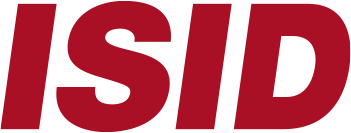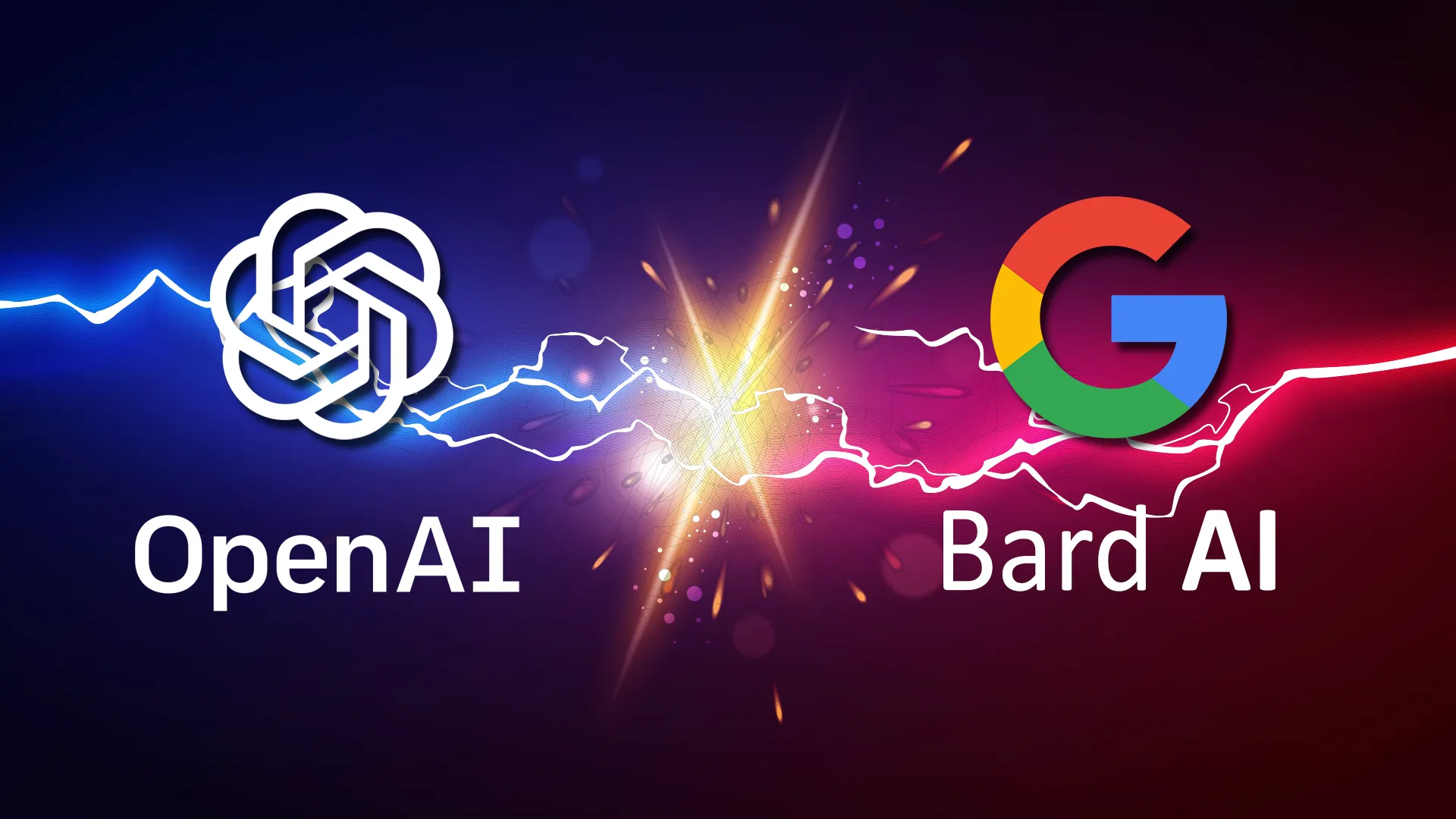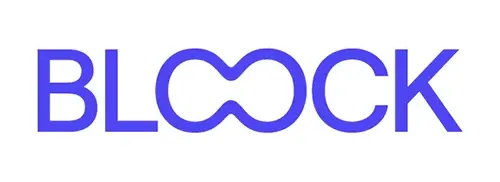How to choose the best radio and television monitoring software?
Nowadays, keeping track of political news and monitoring compliance with broadcasting regulations is a crucial task in any media. For this reason, having a TV and radio monitoring system has become an essential tool for professionals in the sector. In this article, we will explain how to choose the best TV and radio monitoring software for every need.
First of all, it is important to keep in mind that there are different types of TV and radio monitoring systems on the market. For example, some systems focus only on political news monitoring, while others offer broader functions, such as advertising and audience tracking. Therefore, before choosing a monitoring system, it is necessary to identify the specific needs of the media outlet.
Once the needs have been identified, it is time to choose the right TV and radio tracking system. Below are some of the key features to consider when selecting a monitoring system:
1.Broadcaster coverage: it is essential that the TV and radio monitoring system has a wide coverage of broadcasters. In other words, it must be able to monitor all stations relevant to the media in question. In addition, it must be able to record all broadcasts, both live and delayed.
2. Accuracy: The TV and radio monitoring system must be accurate in identifying and recording broadcasts. It must be able to recognize the difference between programs, advertising and other content, and must record them accurately and in detail.
3. Accessibility: the TV and radio monitoring system must be easy to use and access. Ideally, it should be available online and allow real-time access to broadcasts and tracking data.
4. Data analysis: the TV and radio monitoring system should offer data analysis tools that allow the user to get the most out of the information collected. For example, it should be possible to generate customized reports, graphs and statistics to assist in decision making.
5. Integration: the TV and radio monitoring system must be compatible with other systems used in the media. It must be able to integrate with content management tools, audience analysis systems and other tracking systems.

Once these factors have been evaluated, it is possible to compare different TV and radio tracking systems on the market.
When specific tracking needs have been established, the next step is to research the available options. There are many companies offering TV and radio monitoring systems, and it is important to do detailed research before making a decision.
How to Choose the Best TV and Radio Monitoring Software
One of the first things you should consider is the platform’s ability to capture, store and analyze large amounts of broadcast data. Make sure the system you choose has enough storage capacity to handle the amount of data you expect to collect. You will also want to consider the system’s ability to analyze the data and generate useful reports.
Another important factor to consider is the system’s ease of use. A good tracking system should be easy to set up and use, even for those without technical expertise. Make sure the platform you choose has an intuitive user interface and good technical support in case you need help.
In addition, it is important to consider the cost of the system. TV and radio tracking systems can be expensive, but they can also save you time and effort in the long run. Make sure that the system you choose fits your budget and that the cost is justified by the benefits it provides.
Finally, make sure the company offering the system has a good reputation in the industry. Research their track record and read their customer reviews to make sure you are working with a company that is reliable and will provide you with good customer service.
In conclusion, choosing a TV and radio tracking system can seem overwhelming, but with the right research, you can find a platform that fits your specific needs. Be sure to consider your tracking needs, the system’s ability to capture and analyze data, ease of use, cost and the company’s reputation before making a decision. In doing so, you can be confident that you are making an informed decision and that you are using technology to enhance your ability to track political news and monitor compliance with broadcast regulations.
With Videoma Monitor you have the right tool to monitor media and quickly and effectively get the information you need.
Google Bard vs. ChatGPT, battle for the AI throne
ChatGPT is the talk of the town and it seems that Google has felt the pressure, ever since Microsoft acquired the AI chat platform. That’s why they have announced their direct competitor: Google Bard. But the announcement hasn’t gone as well as they would have liked….
A rushed announcement?
At ISID we use and develop AI technologies for our different solutions and, in fact, we are looking at the possibilities of integrating ChatGPT in some of our products, to enhance and diversify the automatic documentation performed by our AI video analytics modules.
So we know how difficult it is to choose the right moment to present the right product in the market. And it seems that Google has stumbled right on that stone just 10 days ago.
On January 23, Microsoft announced a third round of investment in OpenAI, the creators of ChatGPT (among others) in which they have been investing for several years. This time, Microsoft is committing to several billion dollars of investment, over the next few years, to advance the development of AI technologies (and to leverage those in their future products).
For Tuesday, February 7, Microsoft had announced an event related to this and Google went ahead, announcing on Monday, February 6, the existence of Google Bard, Google’s AI chat. It was Google CEO Sundar Pichai himself who made the announcement.
However, several mistakes, blunders (an employee forgot the phone needed for the demo) and wrong links to Bard, ended up generating a wave of discontent among Google’s own employees, who wrote to Sundar, telling him to “go back to his long-term strategies” and that “the Bard presentation was rushed and botched”.

It never rains but it pours
Sundar Pichai is not at his best right now at the company, after firing over 12,000 employees (6% of the total) just a month ago because, in his own words, “Google has been hiring for an economy that no longer exists.”. The background to this story is that Google’s stock has fallen more than 10% in just one week, due to concerns of the threat that ChatGPT’s integration into Bing, Microsoft’s search engine, may pose. This, arguably, was the trigger that moved Google to make a hasty announcement of a product that is not yet ready, nor in a position to compete with OpenAI yet.
It is clear that the war of dominance among AI tools started a few months ago. Multiple vendors are trying to be the first to get the biggest share of the AI market pie, which is considerable. According to Grand View Research, in 2022 the market for AI technologies was $136.55 billion, growing a 37.3% through 2030. Google and Microsoft’s CFOs must be rubbing their hands just thinking about the huge profits they could make in the next decade, and they are trying their best to reserve as much of that market for themselves, as possible.
What are the differences between ChatGPT and Google Bard?
However, as of today, there are numerous differences between ChatGPT and Google Bard, which tip the balance (at least for the time being) towards Google Bard. Both use NLP (Natural Language Processing) and Machine Learning models for their chat systems. But that’s where the similarities end.
- ChatGPT uses data that was collected until 2021, while Google Bard has the ability to integrate current data (probably obtained from the search engine) into its answers.
- ChatGPT is based on the GPT (Generative Pre-trained Transformer) language model while Google has opted for LaMDA, a proprietary model.
- ChatGPT includes a plagiarism detector to avoid accidentally generating texts that someone else has already written. Google Bard hasn’t one.
- ChatGPT is available for testing in both free and paid versions. Google Bard is only limited to Beta Testers at the moment and there is no public roadmap so far.
- OpenAI technologies will not only end up in Microsoft products, while Google Bard is exclusively oriented to improve the Mountain View company’s products.

Who will win the race?
Well, to quote Master Yoda: “Do it, or do not, there is no try...". In other words, anyone who commits to AI technologies has to be consistent and stick it out to the end, even if it is the party that ends up losing, or being left with a niche market. This is not comparable to the Google Glass initiatives or other Microsoft/Google products that have fallen by the wayside. AI is an inescapable future, simply because of the enormous advantages it offers, if applied correctly.
With this market, as with all other high-growth markets in the past, the same thing will happen: at the beginning there will be tens or hundreds of players, some trying to keep more and others less, and after a few years, many will leave or be absorbed by the strongest. In the end there will be half a dozen tools, 2 or 3 of which will be used by the majority and the rest will have their specific uses.
However, I still miss something in this equation: we've talked about Microsoft and Google, but do Amazon and Apple have in store for us? Or, if we go to the other side of the globe...what about Alibaba?
Benefits of media monitoring for a press office
If you are part of a press office, it is essential that you are aware of all the times clients are mentioned. Media monitoring by hand is time-consuming, so it’s best to use specialised tools. In this article, we will explore the benefits of media monitoring for a press office and why it is so important for your work.
What is media monitoring?
Media monitoring is the process of tracking and analyzing content that is published in different media, be it TV or radio broadcasts (or other channels) in streaming, digital newspapers, online magazines, websites, social networks, etc. The objective is to obtain information about a specific topic or company and to evaluate the reputation and impact of that information on the public.
In today’s online world, customers are accustomed to receive information about their actions almost instantaneously. That is why media monitoring is essential to keep clients informed about relevant news and trends in the industry, your media appearances, statements, the impact of your advertising campaigns and, in general, what is the general public’s sentiment towards your brand, service or company. In addition, it is a key tool that allows you to monitor reputation and detect any problems or crises, before they may arise.
Benefits of media monitoring:
1.Obtain relevant and updated information:
Media monitoring allows you to keep abreast of events, news and information, practically as they happen. This helps you make informed decisions and gives your clients a clear perspective on the current landscape.
2.Identify opportunities for your clients:
Media monitoring also helps you identify opportunities for your customers. For example, if you spot a trend in the market, you can report on how they can leverage it to their advantage. Also, if a news story breaks, you can use it to generate more exposure. You can leverage the news to create a press release or a social media campaign to increase their media presence. Finally, competitor monitoring also generates valuable insights for your clients about the actions or directions their immediate competitors are taking.
3.Reputation monitoring:
Another important benefit of media monitoring is that it allows you to monitor reputation and sentiment. If there are any problems or crises on the horizon, you can spot them quickly and take action to minimize their impact.
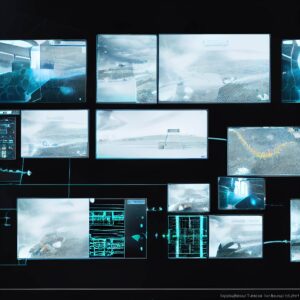
4. Evaluate the impact of your campaigns:
Having an efficient and flexible media monitoring tool is also useful for assessing the impact of your campaigns. You can monitor the success of your media campaigns and evaluate their impact on the target audience’s perception.
5.Identify trends and pattern:
The joint analysis of multiple data points over time (which a good monitoring system always stores) allows you to identify trends and patterns of opinion, consumption or others. With them you can design strategies or inform your customers to decide new courses of action or business. And you can also use this information to create communication strategies.
In short, media monitoring is an essential tool to facilitate the work of press offices. It helps you stay informed of all the essentials and, what’s more, because it’s AI algorithms, it allows you to monitor multiple channels at once in an unattended way and alerts you instantly, when there is something interesting to know or something has happened. The applications of media monitoring are limited only by your imagination and you can gain valuable information by monitoring the media, to apply to the benefit of your clients and your media agency.
H.264 vs H.265 Enhance your video and reduce the size
Enhance your video and reduce the size
Video is an essential part of communication today, whether in advertising, education or entertainment. Therefore, it is important to choose the right format to achieve good quality and an acceptable size. In this article, we will compare two popular formats, H.264 and H.265, to help you choose the one that best suits your needs.
H.264
H.264 is a compressed video format that has been widely used in the video industry since 2003. This format is used for a wide range of applications, from live streaming to video distribution over the Internet. H.264 is supported by most video editing devices and programs, making it easy to use and accessible to a wide range of users.
Advantages:
- Compatibility: H.264 is compatible with a wide range of devices and video editing programs.
- Video quality: H.264 offers good video quality, especially for videos with smooth movements and intricate details.
Disadvantages:
- Large file size: Despite its good video quality, H.264 often results in a very large file size, which can be a problem for video streaming and storage.
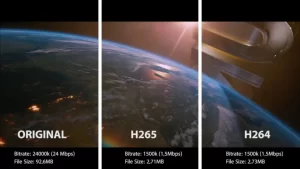
H.265
H.265 is a compressed video format that was released in 2013 and is a significant improvement over H.264. This format is primarily used for high-definition video streaming applications. H.265 is a more efficient format in terms of file size, which means similar video quality can be achieved with a much smaller file size.
Advantages:
- Efficiency in terms of file size: H.265 is much more efficient in terms of file size than H.264, which means similar video quality can be achieved with a much smaller file size.
- Compatibility: H.265 is compatible with a wide range of devices and video editing programs.
Disadvantages:
- Compatibility: Although H.265 is supported by most devices and video editing programs, there are still some that are not.
- Longer encoding time: H.265 encoding is more complex and requires more time than H.264. This means that encoding a video can take longer and require more hardware resources.
In summary, H.264 and H.265 are both popular standards for video encoding, and each has its strengths and weaknesses. H.264 is more compatible and can be played on a wide variety of devices, but H.265 offers better video quality with a smaller file size.
If you're looking to reduce the size of your videos without sacrificing quality, then H.265 is the way to go. However, if you need more compatibility, you may want to choose H.264. Ultimately, the choice depends on your specific needs and the available hardware and software resources.
ISID will exhibit at ISE 2023 in Barcelona
From January 31 to February 3, 2023 ISID will be at ISE (Integrated Systems Europe) at Fira de Barcelona, attending this B2B trade show for professionals and integrators in the audio and video industry.
Get your ticket for FREE with our special code: JPFVTUFI
For the past 18 years, Integrated Systems Europe has been the event of reference for AV professionals, bringing together innovators and solution providers from around the world for 4 days to discuss the status quo of audio and video technology developments every year. As the largest trade show of its kind worldwide, it attracts international manufacturers, who present their latest innovations to the market and gather to share experiences and learn about current trends.
For multiple sectors…
The main themes of ISE, always related to technology and the world of AV, are very broad: intelligent buildings, lighting, content creation, live events, TV and radio broadcasts, unified communications, control rooms, etc. All these technologies are applied in multiple ways in the day-to-day life of numerous sectors:
- Corporate. AV solutions to increase workplace productivity.
- Education. AV technology for educators and students to facilitate learning.
- Live events. Audio, video and lighting systems for concerts, events and live shows.
- Venues. For concert halls, theaters, stadiums, museums, tourist attractions or theme parks.
- Hospitality. Lighting and AV for hotels, restaurants and bars.
- Retail. Systems to create pleasant environments in shopping malls, stores and department stores.
- Residential. New technologies for smart homes and home offices.
- IT. Communications technology, conference rooms, alarm or PA systems, and digital signage.
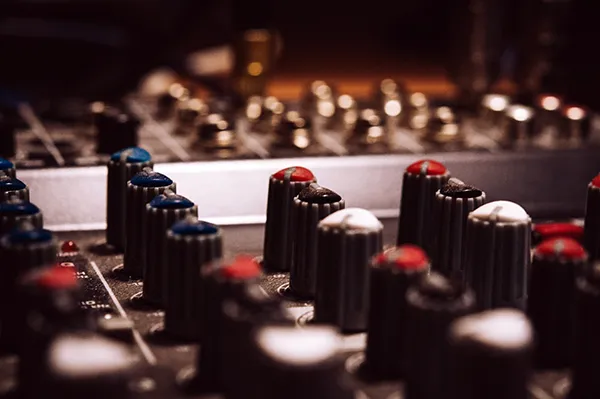

…and multiple professionals
ISE visitors are mainly divided into two broad categories: on the one hand there is the entire audiovisual channel, and on the other end users. As audiovisual channel can be defined as the entire supply chain of products, ie companies involved in the purchase and sale of audiovisual products and the creation of integrated solutions. Among the main functions of the audiovisual channel are the following: systems integrator/installer; solutions distributor/reseller; manufacturer; consultant; live event producer; software developer/programmer; UX/CX designers and developers.
As for end users, these end users often tend to work in verticals that serves the market for professional audiovisual solutions. For example operating, maintaining or upgrading audiovisual systems, perhaps as part of an internal audiovisual, IT or facilities management team. They may also specify or select audiovisual solutions when a specific project arises.
Videoma, intelligent video analysis and management
ISID, professionals in video analysis through AI, will attend ISE with its Videoma range of products, we you can meet our sales and business development manager, Ángel López. Videoma is used in virtually all sectors, from production companies, through administration, health, justice, to security and corporations. The platform, which can be installed on-premise or in the cloud, comes in three main variants:
- Videoma Archive. This is an Enterprise Video Content Management (EVCM) system that helps centralize video and photo libraries in one place, with different types of users and roles for total security. Videoma Archive enables organizations to securely and easily store, organize, classify, find, share and retrieve audiovisual assets thanks to the associated metadata information. It can be integrated with existing systems through APIs and incorporates various tools for distributing files to online, near-line or historical archives.
- Videoma Monitor. This version of Videoma is a powerful software platform that offers a complete solution for media monitoring. It integrates, in a single tool, all the necessary functions for effective media monitoring, both television and radio broadcasts as well as online platform content. With powerful artificial intelligence analyzers, it allows to automatically search and classify all current information.
- Videoma Intelion. It is an audio and video analyzer for police forces and intelligence centers, which reduces investigation times to a fraction of the usual, by automating the tasks of review and documentation of videos and audios generated in surveillance operations, listening or analysis of social networks. Intelion captures video files, live surveillance cameras, live TV and radio broadcasts or content from online platforms in a massive and unattended manner, and applies advanced AI-based analyzers to automatically classify all information and locate targets in near real-time.
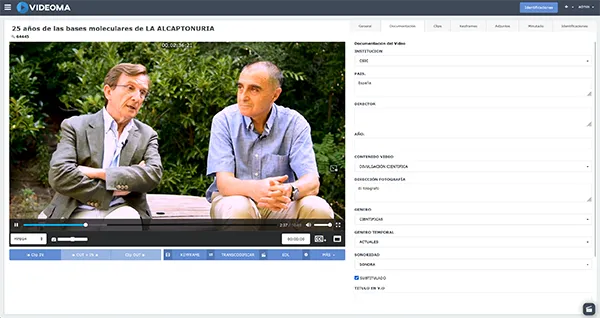
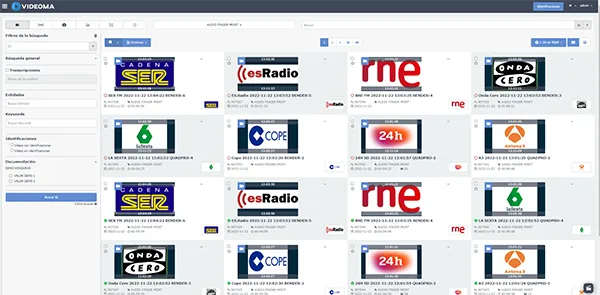
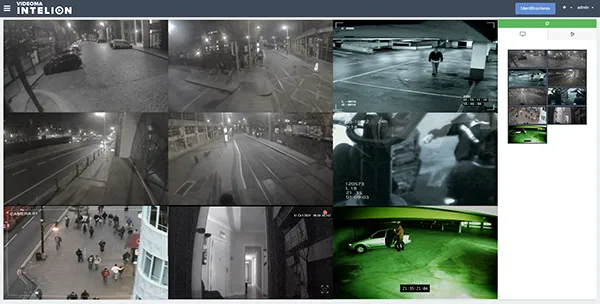
ISID announces its collaboration with Bloock
Blockchain-based technologies make it possible to maintain an immutable and unalterable record of the information stored, with complete traceability from the origin. For this reason, ISID has started a partnership with Bloock, manufacturer of solutions related to the Ethereum Blockchain and oriented towards data certification and traceability.
Bloock’s software is scalable and allows you to validate any type of digital file by registering it on the Ethereum Mainnet, one of the main Blockchains for storing information securely and immutably. Bloock’s solution allows to avoid the bottleneck problems that the Ethereum network can suffer in situations of high traffic or high use.
Blockchain as a certifying tool
In the specific case of ISID, we will use Bloock to certify the video and audio files analyzed by our AI-based systems, so that our clients can easily verify the authenticity of the recordings with the help of Bloock tools. and a unique hash that is generated for each file. This allows the client himself to verify that the files he is using or sending have not been altered at any time and even pass the proof of this to third parties, since the Ethereum Blockchain is publicly accessible.
This practical application by Blockchain highlights the many uses that Blockchain technology has, erroneously identified only with cryptocurrencies, although in reality they use the Blockchain to record the operations that are carried out. Bloock solutions are applied in numerous sectors such as logistics, insurance, health, pharmaceuticals, IoT, education and food.
With this step forward, the collaboration between ISID and Bloock will bring Blockchain technology closer to customers, providing enhanced security, flawless traceability, and elevated ease of use.
